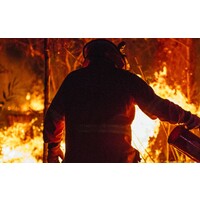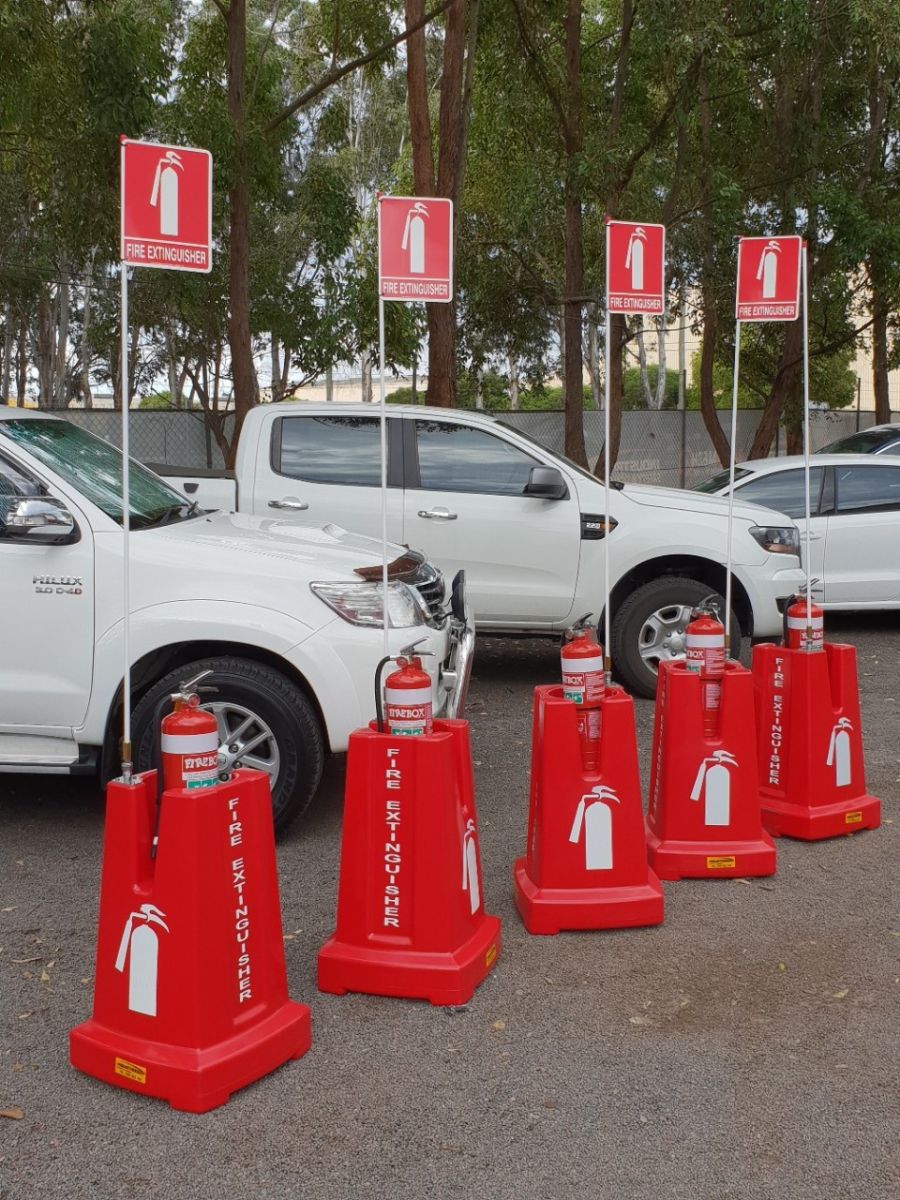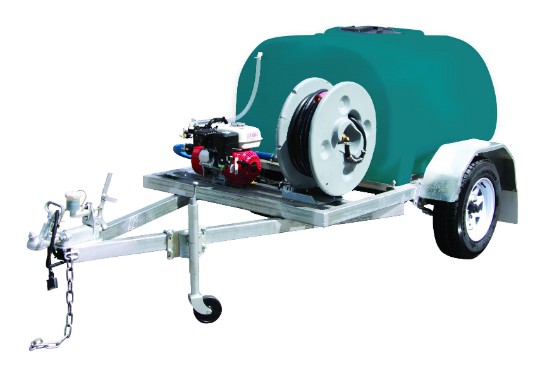
Fire Classes and Fire Extinguishers
There are six main types of fire extinguisher available in Australia – water, foam, dry powder, carbon dioxide (CO2) or wet chemical and vaporising liquid – with each identifiable by a coloured band denoting the contents.
Knowing which equipment is best suited for your workplace is important in order to meet regulations, and protect the lives of workers.

Pictured is some of the Fire Extinguishers & Stands - Industroquip provided for the Sydney Metro Project)
However, being equipped to prevent flames from engulfing your business premises first requires an understanding of the different fire types, and how each should be treated, remembering that not all fires, or extinguishers, are the same.
What are the Fire Classes?
Fires are divided into six classes, according to what fuelled the fire. Categorising fuels in this way can help to identify the type of extinguisher required.
Class A: Wood, Paper & Plastic
Class A is the most common type of fire encountered by firefighters and may involve clothing, rubbish bins or a pallet of cardboard. Most suppression types are effective for Class A fires, except for extinguishers that use carbon dioxide.
Class B: Flammable & Combustible Liquids
Fires that involve flammable, combustible liquids such as petrol, kerosene, oil, tar, paint, wax, cleaning spirits or alcohol are known as Class B. Dry powder extinguishers are the most suitable for this fire class, and it is also possible to use foam or carbon dioxide. Importantly, it is dangerous to use water to suppress this class of fire – especially a grease fire.
Class C: Flammable Gases
This class of fire involves combustible gases such as LPG (liquefied petroleum gas), butane, propane; or LNG (liquefied natural gas, acetylene). Extinguishing a gas fire should never be attempted unless the gas supply has been first shut down, and only a dry powder extinguisher should be used.
Class F: Cooking Oils & Fats
Most Class F fires start in kitchens and involve vegetable or olive oil, lard, butter or dripping used in cooking. Whilst there are different ways to treat this type of fire it’s important to be aware that you should never use water because it can spread the flames. A wet chemical extinguisher should be used.
Different Fire Extinguisher Types in Australia
The right fire equipment can be the first line of defence against a fire hazard. With proper use a portable fire extinguisher can reduce or eliminate the degree of injury, damage and cost to business in the event of a small fire, however, it is essential to understand which extinguisher type should be used.
The coloured band around the extinguisher identifies the type of suppression used, see below;
Red (water) only suitable for Class A and not safe on other classes of fire
Blue (foam) only suitable for Class A and B fires
White (dry powder) suitable for Class B, electrical fires (E) and also suitable on Class A fires (ABE)
Black (carbon dioxide) suitable for (E) and Class B fires. This extinguisher has a noisy and cold discharge, and users should beware of discharge pressure.
Yellow (vaporising liquids) suitable for (E), Class A fires
Oatmeal (wet chemical) suitable for Class A and F fires.
Industroquip have a large range of Fire Extinguishers & Vehicle Brackets, Fire Fighting Equipment including everything from a simple fire blanket right up to a water cartage trailer fitted with fire pumps for remote sites like mining and railway projects across Australia and Identification Signage in stock ready for fast shipping Australia wide.

Whilst Industroquip does not offer Fire Training as yet we can recommend qualified fire training companies in your area to better assist you, we do have staff trained in bushfire management and fire fighting on staff that are happy to answer any basic questions you might have.
Call now for more information on 1300 554 192

Leave a Comment